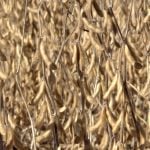When talking to feedlot owners and backgrounders across this country one question almost always comes up. “Is there anything new out there to combat mycoplasma?”
While there are things being worked on it is not an easy fix. What we have found is there are procedures, vaccines combined with minimizing stress (often easier said than done) that go a long way to reducing its incidence. But when cases do become clinical a decision has to be made early for the welfare of the calf to either treat and ship, or euthanize.
Read Also

What to know before you go to Agribition 2025
If you’re attending Agribition 2025, this is the place to find out about tickets, dates and what’s happening this year.
Mycoplasma comes in many clinical forms but in feedlots we mainly see it in respiratory and joint infections.
The respiratory cases are often indistinguishable from other common pneumonias in the feedlot and the joint form can be very similar to histophilus abscesses. In a great number of chronics in our feedlots, if lab specimens were submitted to verify what your veterinarian had diagnosed, mycoplasma would commonly play a role. These cost the feedlot industry millions in treatment and labour as well as deaths and chronics that need to be euthanized.
With mycoplasma we need to concentrate on prevention. Even though a few antibiotics have indications for mycoplasma on the label they are more for metaphylactic treatment when exposure is imminent.
After a few weeks in the feedlot they say pretty much all calves are infected (meaning they have been exposed and are carrying the organism) yet in well-managed yards with pre-immunized and preconditioned calves the incidence can be kept to a minimum.
In cattle, mycoplasma is a secondary invader. In the case of respiratory disease it often comes in on the heels of viral pathogens, primarily IBR. Other respiratory bacteria such as mannheimia, pasteurella or histophilus can also get established and set up the lungs for the invasion of mycoplasma later in the course of the illness.
A good number of these infections may spread to the joints. Once in the joints, especially if more than one joint is involved, the chances of recovery are very slim. It then becomes an animal welfare issue and often lots of money is spent on antibiotics, painkillers and other medications before the decision is made to euthanize.
- More from the Canadian Cattlemen: Lameness in feedlot cattle
In the bison industry, mycoplasma is almost always a primary pathogen and can cause considerable death loss in naïve populations of calves, cows and bulls. There appears to be immunity established once the disease goes through but death losses can get quite high on the initial exposure.
Researchers are working on an effective vaccine and in some cases autogenous vaccines have been tried. That is where the organism is isolated from the farm and used to make a vaccine. This is easier said than done. Often there are commensal mycoplasmas present but not the ones causing the disease. As well, mycoplasma is not like other bacteria in that it has no cell wall, making it more difficult to develop a vaccine.
Several of these vaccines have been tried in the bison industry, some with reasonable success. There is a commercial swine vaccine for mycoplasma so it stands to reason perhaps one may be developed for the cattle industry. But for now it remains the most frustrating pneumonia and joint infection in the feedlot sector.
Researchers at VIDO, the Vaccine and Infectious Disease Organization, are looking at it. This is the organization that came up with the first scours vaccine years ago. They are world-renowned and if we look at how scours vaccines have evolved we can hope mycoplasma vaccines will follow suit.
Antibiotics don’t appear to be the answer. When we treat chronics long term with antibiotics with no hope of eliminating the infection we also raise the possibility of creating resistance to these antimicrobials.
So that leaves us relying on anything that reduces stress and/or reduces the likelihood of other respiratory bugs taking hold. Theoretically, that should reduce the incidence of mycoplasma pneumonia.
We, as veterinarians, always talk about reducing stress. Transportation, processing, weather, parasites and exposure to other cattle cause stress and all play a role in determining whether calves get sick.
Pre-immunization is one precaution cow-calf producers have direct control over and feedlots can then ask for pre-immunized calves. Fortunately this covers the vast majority of calves in Canada. Cow-calf producers are vaccinating calves younger today and reaping the benefits with fewer sick calves on summer pasture. If the boosters are given at weaning then we should, in theory, have less respiratory disease.
We can also avoid unnecessary transportation stress by selling directly to feedlots through satellite or online sales. The distance transported is maybe not as significant as the stress of loading and unloading the calves a couple of times.
Various electrolyte formulations have been tried to minimize shrink during transport. Excessive shrink is a sign of stress.
Controlling parasites increases the gain for cow-calf producers and boosts an animal’s immune response to vaccines.
Taken together all these steps should result in healthier calves with less propensity to get sick when entering feedlots.
And less sickness should translate to less mycoplasma.
In the absence of an industry-saving vaccine or treatment for mycoplasma, we have had to concentrate on prevention, and I think it is working. On average, death losses are decreasing as we prevent more of the other respiratory pathogens, and so is the incidence of mycoplasma. And this trend should expand as we see more collaboration between the cow-calf, trucker, backgrounder and feedlot sectors.
We may never totally eliminate mycoplasma but we can keep it at bay with these prevention strategies.
In light of high calf prices this fall we should all be aiming for the fewest possible cases of mycoplasma in our feedlot population.
Roy Lewis is a Westock, Alberta-based veterinarian specializing in large-animal practice. He is also a part-time technical services vet for Merck Animal Health.
















